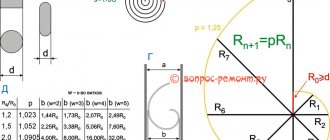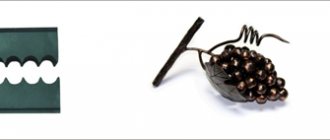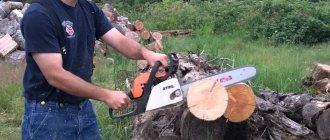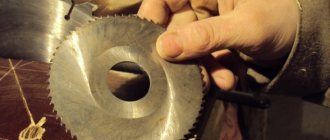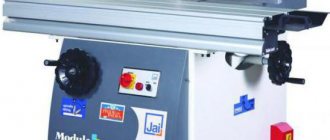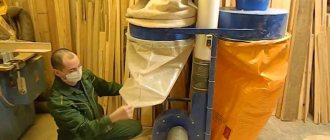The technology of manual metal processing goes back thousands of years. There are two main types. This is cold or hot forging. To process metal using the hot method, you need a forge or melting furnace and a properly prepared room. And the price for these devices is high.
Cold forging equipment can be placed in any suitable location, such as a home extension. If desired, some of the machines can be made independently. This circumstance significantly reduces the costs of organizing production. In addition, photos of the machines are easy to find on the Internet.
Cold forging machines: advantages of their use
The main advantage is that it is quite easy to make a cold forging machine with your own hands. And also, if necessary, you can do without electric drives.
In addition, working on such machines has the following advantages:
- fast learning;
- ease of operation;
- low labor costs;
- possibility of producing a series of parts;
- creating unique designs by combining basic elements;
- safety.
Characteristics
Without heating, using the cold plastic deformation method, it is recommended to bend profile pipes with a square side of no more than 80 mm .
Please note! Since wall thicknesses affect the forming process, it is necessary to carry out a technological test to maintain the integrity of the pipe.
Manual bending machine BLACKSMITH M3-G. Photo 220Volt
Pipes with a square side size of up to 30 mm are bent on manual machines. To increase the productivity of machines, group bending of profile pipes stacked next to each other is used. The width of the row depends on the design of the machine and its power.
Types of machines
There are several main types of machines used in cold forging of metal:
- snail;
- torsion bar machine;
- gnutik;
- wave;
- press.
This is the minimum set of machines to start working with workpieces. And also you won’t be able to do without an angle grinder (angle grinder) and a welding machine.
In addition, devices such as a globe, a flashlight or a volumetric volume are often used in production.
Where can I buy
In addition, for users of this site kovka-svarka.net there is a special section that contains information about the best manufacturers of cold forging machines of various types: manual, snail, bending, etc. On this page you can see the list of proposed suppliers and find out their contacts.
Purchasing universal equipment or a set of machines will allow you to complete cold forging projects yourself.
Which machines are the most important?
Almost all fixtures used in the cold forging process are installed on the two main machines as add-ons.
A globe, flex or volumetric tube is placed on the base of the cochlea.
The flashlight device is mounted on a torsion bar machine.
Tools and equipment
Depending on which forging technology is selected, the list of equipment used changes. Machines for artistic forging:
- press;
- twister;
- snail;
- flashlight;
- globe;
- gnutik;
- wave.
This equipment is used when applying the cold processing method. When hot processing, the main devices and tools are:
- bugle;
- anvil;
- blacksmith hammer;
- forceps;
- hammers for artistic processing.
We must not forget about fuel for the forge. When heating metal, you need to take care of fire safety and good ventilation. A fire extinguisher must be present in the workshop, and you must work using protective equipment to avoid burns.
Device for bending metal elements “Snail”
Do-it-yourself cold forging is impossible without the use of this machine. It is used to make rounded patterns from a profile pipe or rod. The resulting pattern elements are curls or volutes.
The workpiece is shaped by winding it onto a template using hands or levers.
In more complex designs, the workpiece is bent using a jig attached to the shaft axis.
You can buy such a machine or make it yourself.
Products and elements
Each individual cold forging element is manufactured on an individual machine or equipment specially adapted for this purpose. Spirals and curls - on the “Ulitka” machines, various arcs - on the “Gnutik”, “Obemnik” machines, pipe benders, etc. Only when assembled by the designer into one single complex in the finished product do they represent a work of art.
Transparent fence, cold forging. Photo Integral
This is how original fences, window grilles, gazebos, home furnishings and many other items are obtained, decorated with elements from the cold forging arsenal. Photos of various items are collected in a separate article; illustrations demonstrate the variety of products produced using the cold forging method.
Finished products and elements can be selected according to your choice and purchased on the websites of manufacturers and sellers, which are collected in the appropriate sections.
Do-it-yourself snail machine for cold forging
Manufacturing a machine consists of several stages:
- Drawing. When drawing up a drawing, it is necessary to strictly maintain the proportions of all parts. The gap between the central axis and the stop should be 3-4 mm wider than the workpiece. Then the finished part can be easily removed from the machine.
- A pipe with a diameter of 30 mm or more is welded in the center to a steel plate made of a sheet with a thickness of at least 3 mm. A central stop is attached nearby to fix the beginning of the workpiece. Then a metal strip equal to the width of the workpiece is welded to it, bent in a spiral at the required angle.
- The device is fixed to the frame. It is best to secure it with bolts so that it can be easily replaced if necessary.
- In order to facilitate the process of bending the workpiece, a handle is welded to the device. It is attached on the opposite side of the workpiece so that it does not interfere with installing and removing parts.
To make any cold forging machine yourself, you will need the following tools:
- welding machine;
- drill;
- grinder (angle grinder) with cutting and grinding wheel;
- drills of various diameters;
- metal crown;
- magnetic square;
- compass;
- vice.
You should start working after all the tools are available.
Snail with ploughshare
A ploughshare is a strip of metal bent to the shape of the desired part. The template according to which the curls will be made. Usually the ploughshare is made removable, since the curls are made according to individual sizes for each product.
Snail with lever
In the case of spruce, you simply need to twist the workpiece into a spiral, using a snail with a lever. The part is attached between the main shaft and the stop and, using a lever attached to the frame, the required number of turns is wound. The longer the lever, the less force must be applied to bend the workpiece.
Forging bending equipment for hot and cold forging of metal, dimensions
To enable shaping, hot forging uses heating of the workpiece being processed. Such equipment uses a forge or, if work is carried out with small workpieces, a muffle furnace . Considering that it is additionally required to organize a workplace for processing hot workpieces, the premises for organizing such production must be quite large.
In cold forging, at a minimum, there is no large equipment for heating . The equipment and accessories used in it do not occupy a large production area. Some types can easily fit on your desk table.
Manual machines: twister, snail and others
To manufacture typical basic elements that are used in cold forging, a very large range of machines is not required. The next set of hand-held machines will allow you to create a wide variety of cold forging products.
- Gnutik. Using this machine, arcs of various shapes are made from rolled rods and the workpiece is bent to a certain angle.
Bending strips on a bend. Photo Firm Utica
- Snail. The machine produces the most popular cold forging products: curls, spirals. The dimensions and shape of curls and spirals are regulated by the jig - the forming equipment for such machines.
Snail type machine PROMA. Photo VseInstruments.ru
- Torsion. A manual machine that twists a rod around its axis. Finished products with this form of workpiece have a more attractive original appearance.
Twister cold forging machine Blacksmith M3-TR
- Flashlight. With the help of this equipment, according to the principle of operation similar to a torsion bar machine, blanks are obtained that resemble the weave of baskets.
Basket making machine Blacksmith M04B-KR. Photo VseInstruments.ru
- Wave. A machine that allows you to produce workpieces in the form of waves with different lengths and amplitudes.
Volna type cold forging machine
- Volume. They produce products such as large radius arcs. Can be used in production where a significant number of such identical arcs are required.
Globe (volumetric) machine for cold forging. Photo ForgingPRO
- Manual pipe benders. The workpiece deformation conditions make this machine most suitable for bending profile pipes.
Pipe bender Smart&Solid BendMax-200. Photo ForgingPRO
- Hand press. A machine for creating imprints (drawings) on the surfaces of workpieces.
- Hand scissors. With their help, the required linear dimensions of the workpieces are achieved.
Cold forging machines can be equipped with an electric drive, which will improve the technical characteristics. Electrical devices are more efficient.
Universal machines, CNC and more
If you have the necessary financial resources, you can start producing the entire range of cold forging blanks on one equipment. Universal machines are capable of performing any technological operation if the necessary equipment is available, including rolling out legs and forming pipes. If it is necessary to ensure 100% repeatability of products, the machines are equipped with a CNC unit.
Universal forging machine Blacksmith UNV3-02. Photo VseInstruments.ru
The use of such equipment allows you to use a minimum amount of production space. CNC machines increase production efficiency, especially in factories with significant production volumes.
Tools
Most cold forging products are made using templates (conductors) and patterns. Before receiving a finished part, the author figures out how to develop exclusive devices for its manufacture. For example, spiral patterns arose with dimensions that respect the harmony of the proportions of the golden ratio.
Homemade conductor
The base surfaces of templates and patterns are formative for the workpieces. When making the templates and patterns themselves, a special cold forging tool can be used. To bend templates from a strip or rod, a fork tool, very popular in blacksmithing, is used.
Machine components and required tools
To manufacture the machine you will need the following materials:
- profiled I-beam;
- vice (2 pcs.);
- steel sheet at least 4 mm thick.
Required tools:
- welding machine;
- Bulgarian;
- level;
- roulette;
- drill.
Manufacturing
A vice is rigidly attached to an I-beam of the required length on one side. For fastening it is best to use welding. And also, before installation, a steel sheet is welded onto the I-beam. This will help avoid deformation of the part during the tightening process.
Mobile system
It is assembled on the side opposite to the fixed vice. A vice is installed on top, which is equipped with a movable central part.
It is important that the vice on both sides of the I-beam is strictly in the same plane.
Instead of a lever, a wheel (steering wheel) is welded to the vice. The larger the diameter, the less effort will be required to manufacture the part.
One end of the workpiece is clamped into a fixed vice, the other into a rotating element. Using a steering wheel, the workpiece is twisted into a spiral with the required number of turns.
Flashlight device
Used for making elements in the shape of a “basket” or “lantern” from a square or round rod.
Design and principle of operation
The device is made on the basis of a standard torsion bar machine. A piece of pipe with a large diameter nut welded onto the end is clamped into a fixed vice, in which holes are drilled along the ends to the size of the workpieces.
Then the same part is secured in an opposite, rotating vice. Workpiece parts are inserted into the holes of the coaxial nuts.
A metal shaft is installed between the nuts. Its diameter should be less than the internal diameter of the nuts. Afterwards, by rotating one edge of the blanks, a figure of the required shape is made.
The edges of the rods are fastened together by welding or a clamp.
"Globe" device
Designed to create elements with a large bending radius. Details are used in the design to highlight part of the decor. They often have a separate pattern inside. In professional slang, for this reason, it is sometimes called “volume”.
Design and principle of operation
Installed on a snail base. First, one edge of the workpiece is bent using a specially installed sleeve. It is the basis for the lever axis.
Then, using a second bushing, the workpiece is rolled according to a template made in the shape of an arc of the required radius. Both rollers are mounted on a lever, which is driven by hand. The opposite end of the workpiece is bent in the same way.
Afterwards, the required number of curved parts are connected to each other using welding or clamps.
Equipment for wave and zigzag bending
Forging equipment for wave and zigzag bending resembles conventional pipe benders. Such equipment is equipped with additional rollers that form a wave or hold that part of the part that has already been bent.
Equipment for wave and zigzag bending
To accurately maintain the radius of the wave peaks, overlays with a corresponding bending radius and a depression corresponding to the diameter of the metal profile are used.

